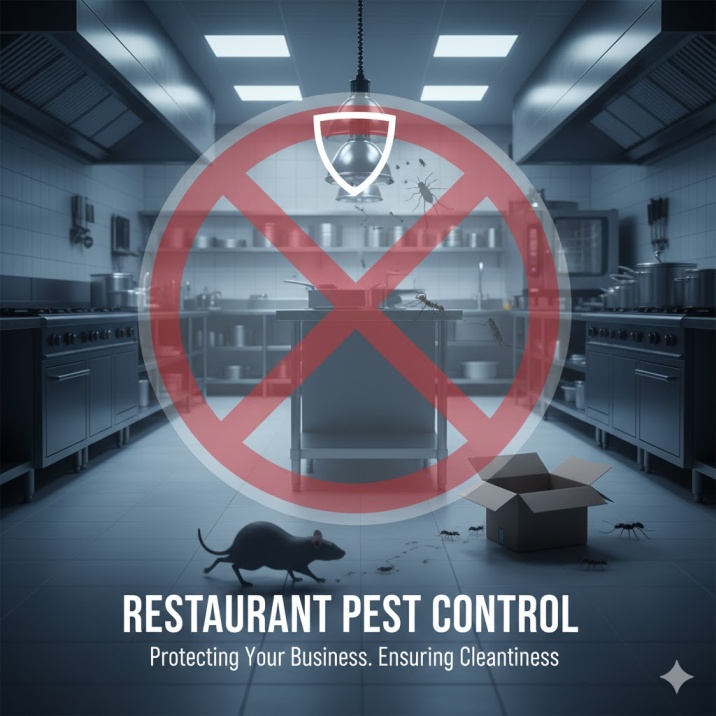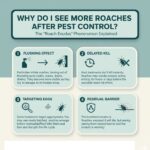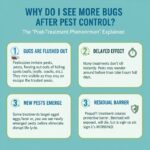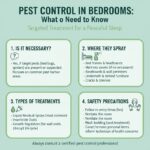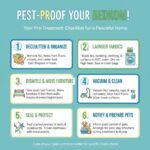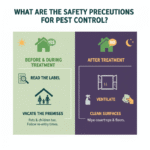Running a restaurant means managing everything from food quality to customer satisfaction. But behind the delicious meals and busy service, there’s one challenge that can quietly harm your business — pests. Rodents, cockroaches, and flies can find their way into kitchens, pantries, or dining areas and quickly cause contamination, property damage, and reputation loss.
Restaurant pest control isn’t just about removing pests. It’s about creating a safe, hygienic environment that protects your food, staff, and customers while keeping your business compliant with health regulations.
Why Pest Control Is Essential for Restaurants
Restaurants are a magnet for pests. Food scraps, moisture, and warmth make the perfect conditions for them to thrive. Even one small spill or open trash bin can attract an infestation. Ignoring the problem can lead to:
- Food contamination: Rodents and insects can transfer bacteria to ingredients, utensils, and prep surfaces.
- Health risks: Droppings and shed skin can cause allergies and trigger respiratory problems.
- Reputation damage: One pest sighting can turn into negative reviews and loss of trust.
- Business interruption: Health inspectors may fine or close restaurants that fail cleanliness standards.
Regular pest control keeps your kitchen running safely and protects the trust you’ve built with customers.
Common Pests in Restaurants
Restaurants face unique pest problems compared to homes or offices. Some of the most common pests include:
- Rodents: Mice and rats hide near food storage, behind stoves, or under sinks. They chew through packaging and wires.
- Cockroaches: Found in drains, under refrigerators, and inside cabinets, cockroaches multiply quickly and spread bacteria.
- Flies: Fruit flies and houseflies breed near waste bins, drains, and overripe produce, spreading germs to food and drinks.
- Ants: Attracted to sugar spills and leftover crumbs, ants often enter through cracks near windows or floors.
- Pantry pests: Beetles and moths infest flour, rice, and dry goods if containers are left unsealed.
Recognizing early signs such as droppings, chewed packaging, or a musty smell can prevent a full infestation. Identifying these early warning signs of restaurant pests helps you act quickly before the issue grows.
How Pests Enter Restaurants
Pests can enter even the cleanest restaurants. Common entry points include open doors during deliveries, cracks in floors or walls, and unsealed windows. Sometimes they arrive inside packaging materials or delivery boxes. Overflowing garbage bins and damp areas also attract them. Regular maintenance and waste management reduce the risk of infestation.
Effective Strategies for Restaurant Pest Control
1. Regular Inspections
Frequent inspections in kitchens, storerooms, and waste disposal areas help detect early activity. Spotting droppings, nests, or gnawed materials early can prevent expensive treatments later.
2. Maintain Strict Sanitation
Cleanliness is one of the best defenses against pests. Restaurants should:
- Clean prep areas and counters after each shift
- Empty and sanitize trash bins regularly
- Store dry goods in sealed, airtight containers
- Sweep and mop floors daily to remove crumbs and spills
A clean kitchen leaves fewer food sources and hiding places for pests.
3. Hire Trained Professionals
Pest control experts understand how to handle food-related environments safely. Hiring trained professionals is important because they know how to protect food, equipment, and staff without disrupting kitchen operations. Their experience also ensures the use of approved, food-safe treatments that meet local health codes.
4. Use Integrated Pest Management (IPM)
IPM focuses on prevention, monitoring, and targeted treatments rather than just chemical use. Common solutions to handle kitchen infestations include setting traps, sealing cracks, and using eco-friendly treatments in non-food areas. This long-term approach minimizes pesticide exposure while ensuring effective results.
5. Involve Your Team
Your restaurant staff plays a major role in keeping pests out. Train employees to store food properly, clean workstations regularly, and report pest sightings immediately. Awareness and quick action prevent minor problems from becoming major infestations.
Choosing the Right Pest Control Partner
Not all pest control services are the same. Restaurants require providers who understand the unique needs of commercial kitchens. Look for a company that:
- Uses food-safe and eco-friendly products
- Follows strict health and safety standards
- Offers customized treatment plans for restaurants
- Provides fast response times for urgent issues
Choosing a company that offers emergency pest control for restaurants ensures quick help if pests suddenly appear during business hours.
Preventing Pests After Treatment
Pest control isn’t a one-time fix. Regular maintenance and ongoing monitoring are key to keeping your restaurant pest-free. Cleaning schedules, structural repairs, and follow-up inspections all contribute to long-term prevention.
Knowing the duration of pest treatments helps you plan maintenance visits and cleaning routines effectively. Routine checks also reduce the chance of reinfestation. Understanding how to prevent pests from coming back in kitchens allows you to maintain a safe and compliant space for both staff and guests.
FAQs About Restaurant Pest Control
-
Why is pest control necessary in restaurants?
Pest control prevents contamination, protects your customers’ health, and helps you stay compliant with local food safety regulations.
-
How often should restaurants schedule pest control?
Monthly inspections work best for most restaurants, though busy or high-risk kitchens may require more frequent visits.
-
Are pest control treatments safe for food areas?
Yes. Professional pest control companies use food-safe, approved chemicals and follow strict safety procedures.
-
Can pests return after treatment?
They can, especially if food or waste isn’t managed properly. Regular cleaning and inspections reduce the risk. It also helps to know how to prevent pests from coming back in kitchens.
-
What is integrated pest management?
It’s a sustainable approach that combines prevention, monitoring, and targeted treatments for effective pest control with minimal chemical use.
-
How much does pest control cost for restaurants?
Prices depend on the restaurant’s size, pest type, and frequency of service. Understanding pest control cost considerations for restaurant pest services helps you plan your budget efficiently.
-
What are the early signs of pest issues in restaurants?
Droppings, insect sightings, damaged packaging, and foul odors are all early indicators. Recognizing these signs quickly helps stop infestations before they spread.

